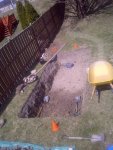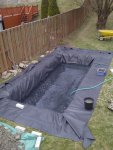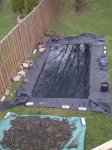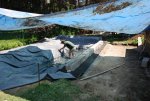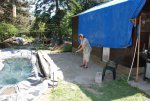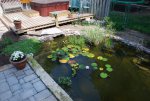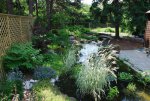- Joined
- Mar 31, 2013
- Messages
- 98
- Reaction score
- 57
- Location
- Southern Ontario, Canada
- Hardiness Zone
- 6b
- Country

I am just about to do the edging around my pond (2 levels of cement/quartz bricks) to hide the liner, capped off with patio stones (formal type, rectangular 16x7). I came across a post that concerned me about the bricks freezing and crumbling, I am in the most southern part of Canada, but we still get winter freeze thaw cycles. Is this a real concern? Should I put the bricks on the hidden side of the liner (liner straight up to cap stones)?
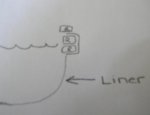
Above is how I planned it, and would have finished it, had it not rained for the past week.
The pond is dug, liner in, water level is just before where I need to install bricks. So my main question is Bricks in the pond or behind liner. I need the 2 levels of bricks to bring water level above grade.
Anyone have cement bricks disintegrate?
Thanks in advance.

Above is how I planned it, and would have finished it, had it not rained for the past week.
The pond is dug, liner in, water level is just before where I need to install bricks. So my main question is Bricks in the pond or behind liner. I need the 2 levels of bricks to bring water level above grade.
Anyone have cement bricks disintegrate?
Thanks in advance.




